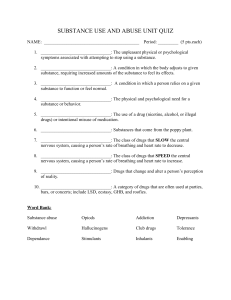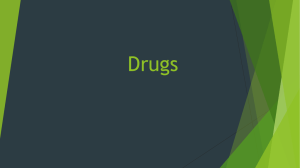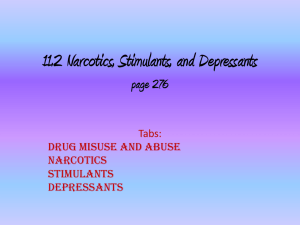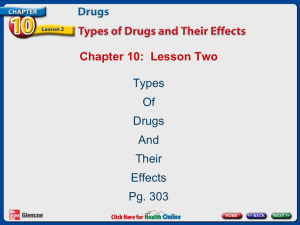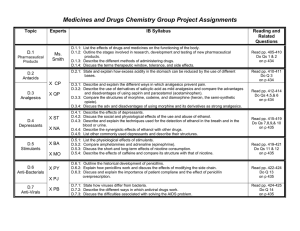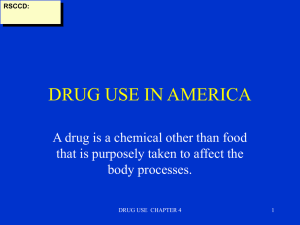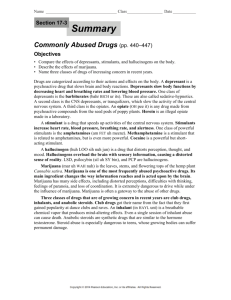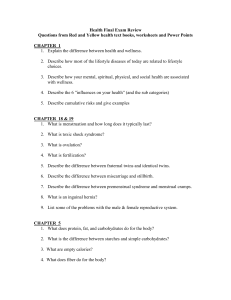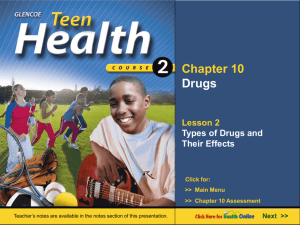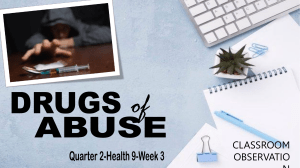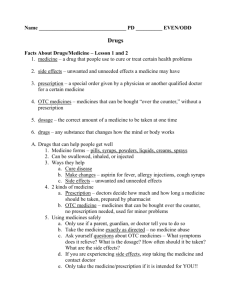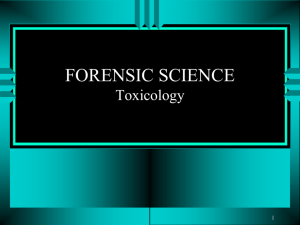LESSON 3- Intro to drugs & Effects
advertisement
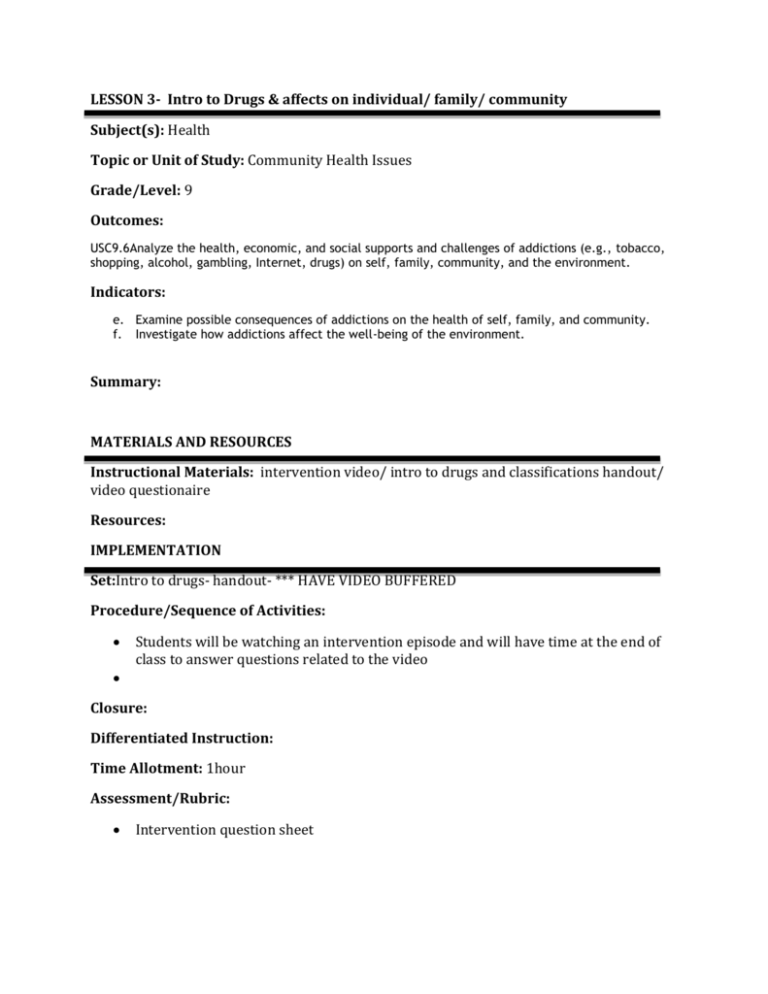
LESSON 3- Intro to Drugs & affects on individual/ family/ community Subject(s): Health Topic or Unit of Study: Community Health Issues Grade/Level: 9 Outcomes: USC9.6Analyze the health, economic, and social supports and challenges of addictions (e.g., tobacco, shopping, alcohol, gambling, Internet, drugs) on self, family, community, and the environment. Indicators: e. Examine possible consequences of addictions on the health of self, family, and community. f. Investigate how addictions affect the well-being of the environment. Summary: MATERIALS AND RESOURCES Instructional Materials: intervention video/ intro to drugs and classifications handout/ video questionaire Resources: IMPLEMENTATION Set:Intro to drugs- handout- *** HAVE VIDEO BUFFERED Procedure/Sequence of Activities: Students will be watching an intervention episode and will have time at the end of class to answer questions related to the video Closure: Differentiated Instruction: Time Allotment: 1hour Assessment/Rubric: Intervention question sheet REFLECTION Top 8 Drug Categories Drug Categories Drugs come in various forms, and can be taken numerous ways. Some are legal and others are not. Drug abuse and misuse can cause numerous health problems, and in serious cases death can occur. Treatment for drug abuse is often sought to aid in recovery. Stimulants These drugs speed up the body’s nervous system and create a feeling of energy. They are also called “uppers” because of their ability to make you feel very awake. Stimulants have the opposite effect of depressants. When the effects of a stimulant wear off, the user is typically left with feelings of sickness and a loss of energy. Constant use of such drugs can have very negative effects on the user. In order to prevent extreme negative side effects of these drugs and the impact they have on life, drug treatment centers are often recommended. Types of drugs include: Cocaine Methamphetamines Amphetamines Ritalin Caffeine Nicotine Inhalants Inhalants are sniffed or huffed and give the user immediate results. Unfortunately, these immediate results can also result in sudden mental damage. When inhalants are taken, the body becomes deprived of oxygen, causing a rapid heart beat. Other effects include liver, lung and kidney problems, affected sense of smell, difficulty walking and confusion. Types of drugs include: Glues Paint thinner Gasoline Laughing gas Aerosol sprays Cannabinoids These drugs result in feelings of euphoria, cause confusion and memory problems, anxiety, a higher heart rate, as well as staggering and poor reaction time. Types of drugs include: Hashish Marijuana Depressants Depressants slow down activity in the central nervous system of your body. These drugs are also called “downers” because they slow the body down and seem to give feelings of relaxation. Depressants are available as prescription drugs to relieve stress and anger, although drowsiness is often a side effect. The “relaxation” felt from these drugs is not a healthy feeling for the body to experience, to stop abuse of this drug, drug treatment is suggested. Types of drugs: Barbiturates Benzodiazepines Flunitrazepam GHB (Gamma-hydroxybutyrate) Methaqualone Alcohol Tranquillisers Opioids & Morphine Derivatives Opioids and morphine derivatives can cause drowsiness, confusion, nausea, feelings of euphoria, respiratory complications and relieve pain. Types of drugs include: Codeine Fentanyl Heroin Morphine Opium Oxycodone HCL Hydrocodone bitartrate, acetaminophen Anabolic Steroids Steroids are taken to improve physical performance as well as to enlarge muscles and increase strength. Negative effects of steroids include baldness, cysts, oily hair and skin, acne, heart attack, stroke and change in voice. Hostility is also a frequent side effect of anabolic steroids. Types of drugs include: Anadrol Oxandrin Durabolin Stanozol Dianabol Hallucinogens When taking hallucinogens, switching emotions is frequent. These drugs change the mind and cause the appearance of things that are not really there. Hallucinogens affect the body’s selfcontrol, such as speech and movement, and often bring about hostility. Other negative side effects of these drugs include heart failure, increased heart rate, higher blood pressure and changes in the body’s hormones. Types of drugs include: LSD (lysergic acid diethylamide) Mescaline Psilocybin Cannabis Magic Mushrooms Prescription Drugs Prescription drugs can be very helpful drugs when used properly and when under the guidance of a qualified physician. These drugs can be used as aids in surgery, to treat medical conditions and while controlling various symptoms. Misuse and abuse of prescription drugs however can be very dangerous. Types of drugs include: Opiods: Codeine, Oxycodone, Morphine Central nervous system depressants: barbiturates, benzodiazepines Stimulants: dextroamphetamine, methylphenidate INTERVENTION VIDEO QUESTIONS 1. How did Conrad become a drug user? 2. Why has he been unable to quit using drugs? 3. How does his addiction affect those around him? 4. How do his family and girlfriend further Conrad’s addiction?
